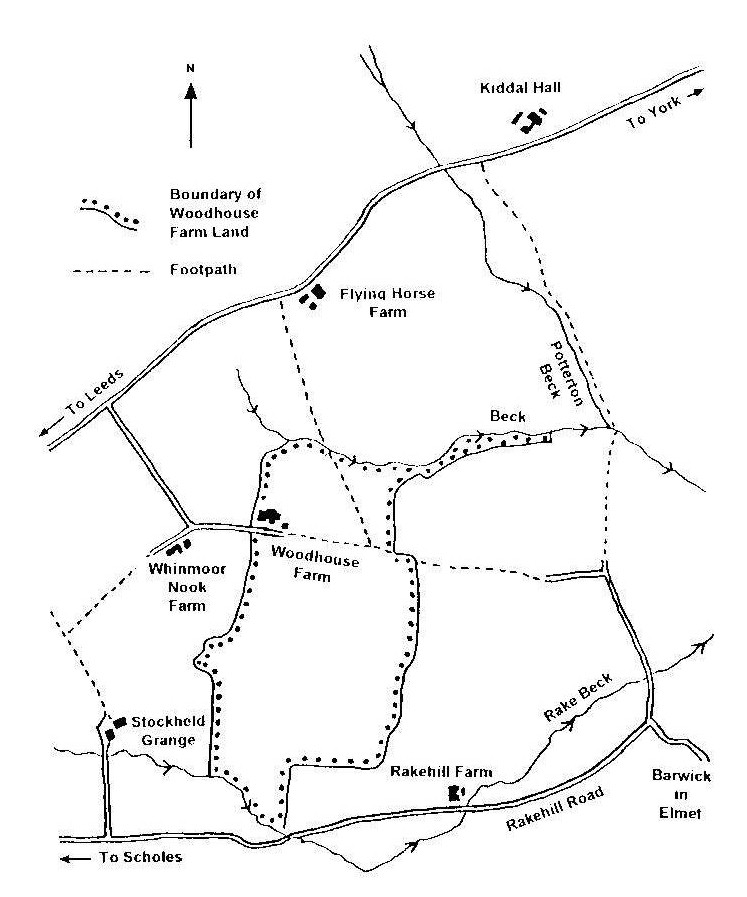
Tenants in Woodhouse (1341) |
||
Land holding |
Value |
|
| Free Tenant | ||
| Ellen de Grenefeld of Barnebogh | a messuage and 7 acres | 2s.6d |
| Bondmen | ||
| Adam Batalle | a messuage, a toft and two bovates | 20s.0d |
| Robert de Wodhouse | a messuage and a bovate | 10s.0d |
| Robert, son of Adam de Halton | a messuage and a half and a bovate and a half | 15s.0d |
| Henry Red | a messuage and a bovate | 10s.0d |
| Alice Milner | a messuage and a bovate | 10s.0d |
| Richard Ried | a messuage and a bovate | 10s.0d |
| Richard Ried | two messuages and two bovates | 20s.0d |
Tenants in Woodhouse (1425) |
||
Land holding |
Value |
|
| Free Tenant | ||
| Thomas Elys | a messuage and seven acres of land formerly Ellen de Grenefeld's | 2s.6d |
| Free Ferm | ||
| Thomas Elys | A mess. a toft and 2 bovates late Adam Battell's | 20s.0d |
| A mess. and a bovate late Robert de Wodhouse's | 10s.0d | |
| Half a mess. and half a bovate of land late of the said Robert | 5s.0d | |
| A close called Angrom containing one acre of land late of the said Robert | 6d | |
| A mess. and a bovate late Robert son of Adam's | 10s.0d | |
| Half a mess and half a bovate late the same Robert's | 5s.0d | |
| A mess. and a bovate of land late Henry Rede's | 10s.0d | |
| A mess. and a bovate of land late Alice Milner's | 10s.0d | |
| A mess. and a bovate of land late Richard Rede's | 10s.0d | 2 mess. amd 2 bovates late of Richard Rede senior's | 20s.0d | which parcels are demised to the said Thomas Ellis by charter and to the heirs of his body. And if the said rent shall be in arrears for forty days, then it shall be lawful for the lord to enter upon the said parcels and hold then to him and his heirs forever. |
Tenants in Woodhouse (1610) |
|
| Free Tenant | John Ellys of Kiddal esq. holdeth freely one decayed messuage where sometime a messuage stood. And 7 acres sometime Ellen Greenfield's and paieth yearly 2s.6d. |
| Fee Farme | John Ellys of Kiddal esq. holdeth in fee farme: |
| One place where sometime a messuage stood, one toft and two oxganges late of the land of Adam Battall. | |
| One other place where sometime a messuage did stand and one oxgange of lande, late of the land of Robert Woodhouse. | |
| And one place where sometime did stand half a messuage and a half oxgange of land late of the lands of the said Robert. | |
| Ditto for Robert, son of Adam (1©), Henry Reade, Alice Milner, Richard Reade and Richard Reade senior (2) | |

ARTHUR BANTOFT